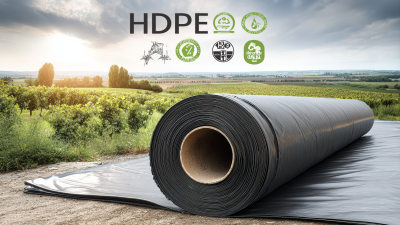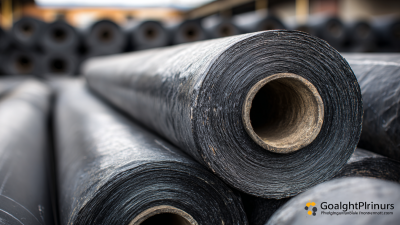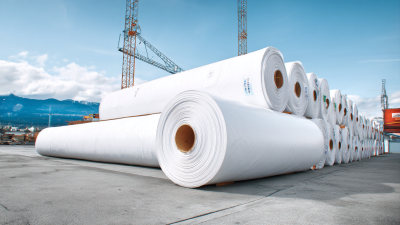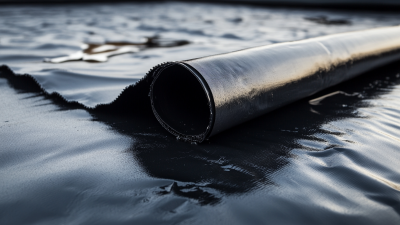Inquiry
Form loading...
- Phone
- E-mail
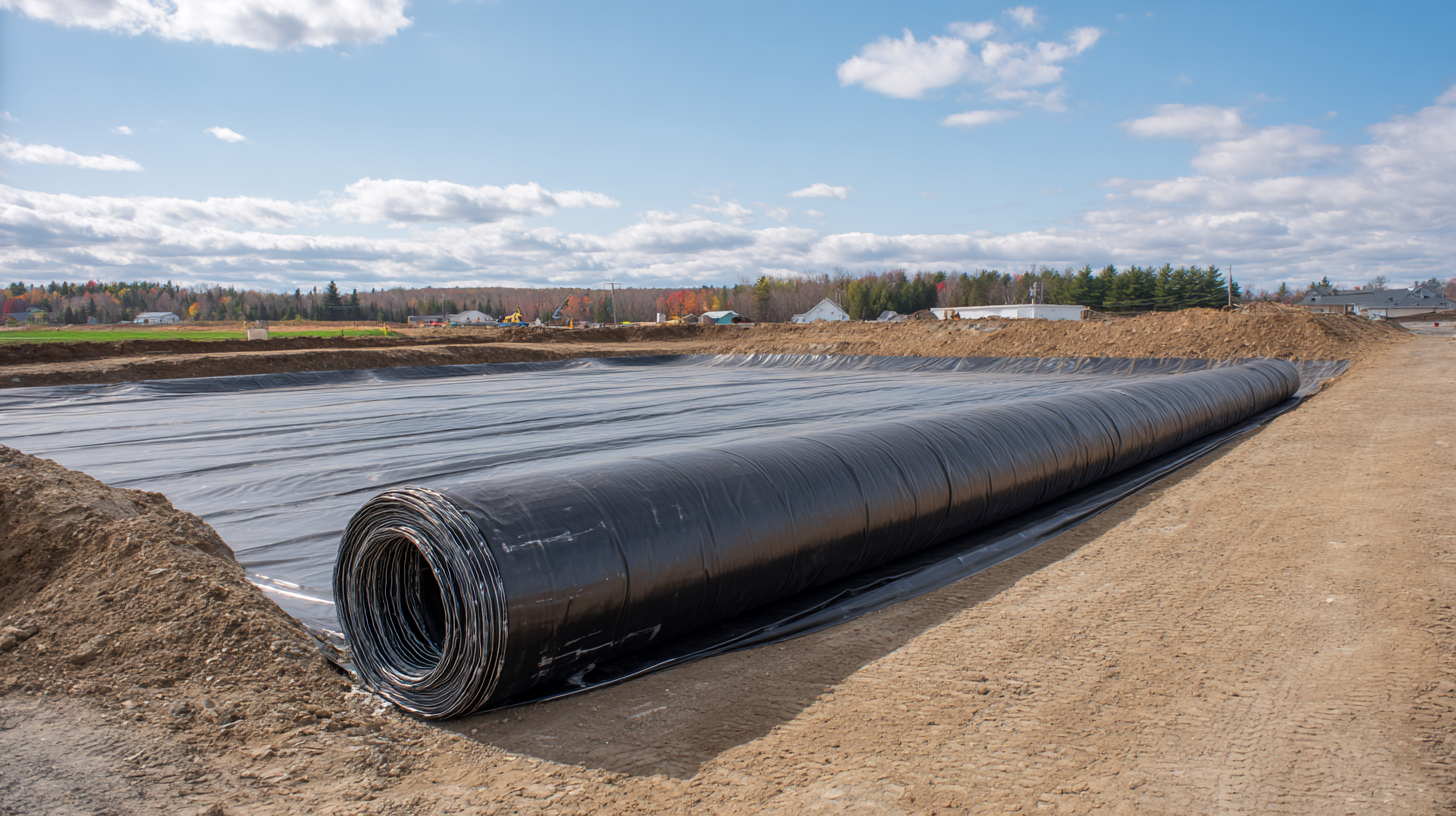 Choosing the right Hdpe Geomembrane for your project needs is a crucial step in ensuring the success and longevity of various applications, from landfills to water containment systems. The selection of an appropriate geomembrane goes beyond basic material characteristics; it involves understanding the specific requirements of your project, including environmental factors, chemical exposure, and installation conditions.
Hdpe Geomembranes are known for their high density and strength, making them suitable for many demanding applications. However, the variety of options available can be overwhelming, prompting the need for a systematic approach.
This guide aims to unravel the complexities of selecting the perfect Hdpe Geomembrane by breaking down essential considerations, evaluating performance metrics, and highlighting best practices tailored to your unique project specifications.
Whether you're a seasoned professional or new to geomembrane technology, understanding the nuances of your selection process will ultimately lead to enhanced project efficiency and durability.
Choosing the right Hdpe Geomembrane for your project needs is a crucial step in ensuring the success and longevity of various applications, from landfills to water containment systems. The selection of an appropriate geomembrane goes beyond basic material characteristics; it involves understanding the specific requirements of your project, including environmental factors, chemical exposure, and installation conditions.
Hdpe Geomembranes are known for their high density and strength, making them suitable for many demanding applications. However, the variety of options available can be overwhelming, prompting the need for a systematic approach.
This guide aims to unravel the complexities of selecting the perfect Hdpe Geomembrane by breaking down essential considerations, evaluating performance metrics, and highlighting best practices tailored to your unique project specifications.
Whether you're a seasoned professional or new to geomembrane technology, understanding the nuances of your selection process will ultimately lead to enhanced project efficiency and durability.
When selecting the right HDPE geomembrane for your project, it's essential to understand the various types available in the market. High-Density Polyethylene (HDPE) geomembranes come in different thicknesses, ranging typically from 0.5 mm to 2.5 mm, which can affect their performance and suitability for specific applications.
Thicker membranes are generally more robust and suitable for projects requiring higher puncture resistance, such as landfill liners or aquaculture systems. In contrast, thinner variants may be adequate for temporary applications or less demanding projects.
Moreover, the manufacturing process and additives can influence the characteristics of HDPE geomembranes. For instance, some geomembranes are enhanced with ultraviolet (UV) stabilizers or antioxidants to improve their durability against environmental factors. Others may feature textured surfaces to reduce slippage, making them ideal for slope applications.
Understanding these variations enables project managers to choose a geomembrane that not only meets the technical specifications but also aligns with the long-term sustainability of the project.
When selecting HDPE geomembranes for your project, it is essential to consider various key factors to ensure that you choose the right product for your specific needs. One of the primary considerations is the thickness of the geomembrane, which can significantly influence its durability and resistance to punctures and tears. Thicker materials are generally more robust and better equipped to handle challenging environmental conditions, making them suitable for applications like landfills or water reservoirs.
Another crucial factor is the permeability of the geomembrane. The lower the permeability, the more effective the geomembrane will be at preventing fluid migration. Understanding the specific requirements of your project, including the types of liquids being contained or excluded, will help guide your selection. Additionally, compatibility with environmental conditions such as UV exposure, temperature variations, and chemical interactions should be assessed to ensure the longevity and effectiveness of the geomembrane in its intended application.
When selecting the right HDPE geomembrane for your project, it is crucial to evaluate the environmental conditions that will impact its performance. Soil type, groundwater levels, and local climate are key factors to consider. For instance, projects situated in areas with high moisture content may require a more robust geomembrane to prevent water penetration, while those in arid regions might prioritize UV resistance. Understanding the specific characteristics of the site can guide you towards a material that will withstand the environmental challenges effectively.
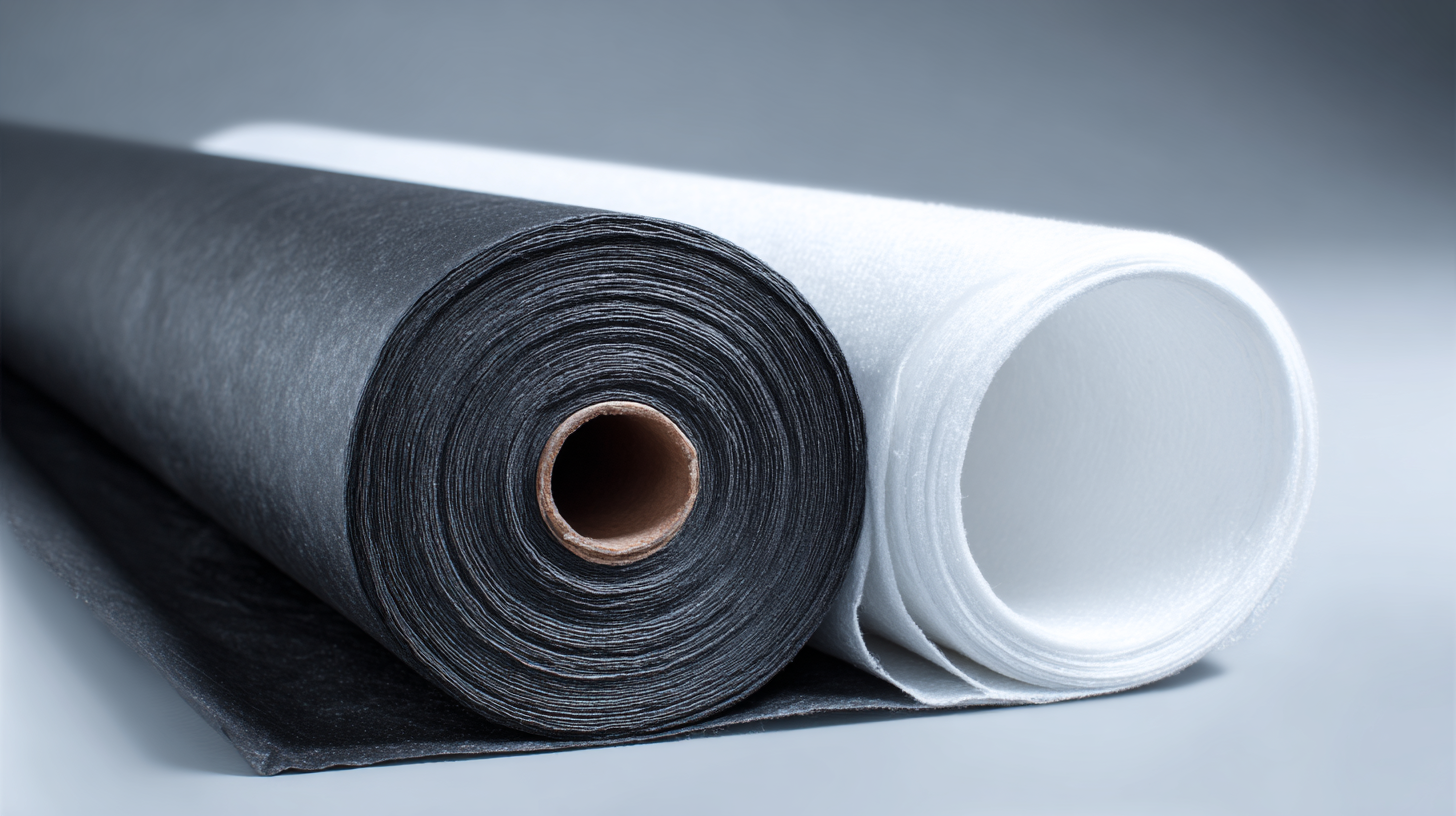
Additionally, the intended use of the geomembrane plays a significant role in material selection. If the project involves containing hazardous materials, the geomembrane must have a low permeability rating and be resistant to chemical degradation. In contrast, applications such as water features or agricultural ponds may emphasize flexibility and ease of installation. By thoroughly assessing the environmental conditions alongside the project's goals, you can ensure that you choose the most suitable HDPE geomembrane to achieve long-lasting and reliable results.
When selecting the right HDPE geomembrane for your project, it's crucial to assess its durability and longevity. According to the Geosynthetic Research Institute’s report, HDPE geomembranes can last over 30 years when properly installed and maintained, thanks to their resistance to UV radiation, chemicals, and punctures. This makes them an excellent choice for applications such as landfills, mining, and irrigation ponds, where long-term performance is essential. However, not all geomembranes are created equal; factors such as thickness, seams, and necessary certifications like the ASTM standard should be considered carefully.
**Tips:**
1. Always evaluate the manufacturer's track record and request third-party test data to confirm the geomembrane's longevity claims.
2. Ensure that installation teams are skilled and experienced, as improper installation can significantly reduce the lifespan of geomembranes.
The longevity of geomembranes also depends on environmental conditions and usage. A study from the International Geosynthetics Society emphasizes that frequent exposure to extreme temperatures and harsh chemicals can compromise the integrity of geomembranes over time. Therefore, choosing a geomembrane with a high resistance rating for your specific conditions is vital for ensuring project success and minimizing future maintenance costs.
| Geomembrane Type | Thickness (mm) | Durability (Years) | UV Resistance | Temperature Resistance (°C) | Application |
|---|---|---|---|---|---|
| HDPE Smooth | 1.5 | 20 | Excellent | -30 to 60 | Landfills, ponds |
| HDPE Textured | 2.0 | 25 | Good | -40 to 50 | Slopes, canals |
| LLDPE | 1.0 | 15 | Moderate | -30 to 80 | Waste containment |
| PVC | 1.2 | 10 | Fair | -10 to 50 | Aquaculture, reservoirs |
When considering the acquisition of HDPE geomembranes for your project, a nuanced cost analysis is paramount. Balancing quality and budget is essential, especially given the projected growth of the HDPE pipes market, expected to reach USD 25.68 billion by 2029. Investing in high-quality geomembranes can enhance the durability and performance of your projects, potentially mitigating future costs related to repairs or replacements.

Furthermore, industry dynamics, including the call from trade bodies for increased import duties on petrochemicals, particularly polypropylene and polyethylene, may affect pricing structures. Adjustments in customs duties could influence the availability and market price of critical materials, prompting businesses to carefully evaluate their sourcing strategies. Understanding these economic factors and conducting a thorough analysis of your project's specific needs will ensure that you choose the right HDPE geomembrane without compromising on quality or exceeding your budget.

